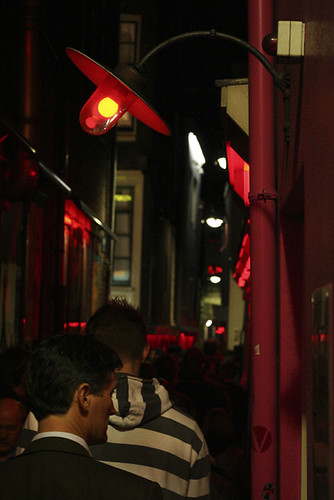skip to main |
skip to sidebar
In my early years, all my studies of history never made much sense to me. I failed to see the importance of dates and stories from the past, when I was really much more concerned with who had won or lost the game of soccer at recess, and what strategy we were going to use in the next game at the next recess. In high school, history began to seem a bit more applicable, as I learned how to protect Mexico from an invading German army during our mock international affairs activities, and as I learned that history extended beyond the heavy, two-inch-thick textbook that was left in my locker unless I had to answer the five questions at the end of a certain chapter. I was slowly beginning to see that there is much to learn from history than facts and dates. History is relevant today. We hear about conflicts in the past, and we read about atrocities of old, but we must come to the realization that what could have been solutions to those conflicts and atrocities in our past could potentially function as solutions to similar problems we may be facing today. Beyond just finding information for a research paper, or filling in dates on a timeline, if we are wise we must be conscious of our past (and all the different areas that it concerns) and apply it to the present. Looking back at various instances in the past, certain people have called the truth of the Gospel into question, and unfortunately, rather than engaging with these issues in an intellectually respectable way, the church often lost credibility to speak into issues, specifically with the issue of Evolution in the 1800’s. In 1860, during a public debate between Thomas Huxley, one of Charles Darwin’s main advocates, and Bishop Samuel Wilberforce, Bishop Wilberforce resorted to making a joke out of Darwin’s scientific theory. As a result, the church lost almost all authority they had once had to speak truth into an issue that was becoming increasingly popular in the time. Perhaps God has given the church reason to believe in something a bit more intentional than the evolutionary process seemed, but that didn’t give reason for His people to make a mockery out of what should have been an intellectual, civilized, and rational debate. Had members of the church been willing to bring truth to this situation, perhaps they could have brought direction to what God may have been doing in the minds of these scientists, and we would not have quite the division between the church and science we so often see and experience today. The issue today is quite similar. Are we walking away from the issues of today, or are we walking into the areas that are potentially dirty, and maybe a bit unfamiliar, to bring a light into the places that are crying for illumination? Society is dying to see a good news that is functioning in the everyday life – in music (even rock n’ roll), in education, in politics and foreign affairs, in science, in the blue-collar workforce, and beyond. Our God is infinitely bigger than we could even begin to imagine, longing to relate to everyone, from the heavy metal guitarist to you local librarian to the politicians in Washington, D.C. The Gospel is relevant - truth mustn’t be scared of a debate.  (existing in a polluted world)
(existing in a polluted world)
 (confronting dirtiness)
(confronting dirtiness)
 (sheltered?)
(sheltered?)
 (clean-up)
(clean-up)
 (in a changing world)
(in a changing world)
 (God's message is the same)
(God's message is the same)
As a way of expressing a society’s views on the world, and the direction that a people seem to be heading in, the arts are an extremely useful tool. The art produced by a community speaks infinitely as to the ideas and statutes they hold as valuable, and the way they see all other parts of the world. As humanity has moved from the “modern” mindsets beginning in the 1600’s to the “postmodern” mindsets of today, the art has equally followed suit. With the “modern” way of thinking, art was predictable, and people had a fairly good idea what to expect as far as the messages that the art portrayed. People painted biblical scenes, beautiful scenery, and realistic portraits of real, living people. Thought was for the most part objective, and this could be seen in the art that people produced.
Lately (lately being in the last 50 years or so) a change has taken place. No longer is truth quite so objective, at least according to popular train of thought. To much of the world, truth is now seen as subjective – that which is experienced by the individual. And, as individual experiences vary to every opposite extreme, so do our truths.
In Paris, this contrast of ideas on the nature of truth can be seen through the architecture that has been produced over the last few centuries. From the “pre-modern” and “modern” time periods you see the buildings beautifully constructed with great attention to detail, but which continue to be fairly predictable, at least from the standpoint of architecture and design. Through buildings like the Notre Dame Cathedral (largely finished by the 14th century, with later additions completed in the mid-19th century) and the Arc de Triomphe (finished in 1836) we can see a mindset that was fairly straightforward. The truth of the people at the time was based on logic and objective rationale, and thus their artistic construction of buildings was grand and very beautiful, but also quite logical.
Contrasted with these more logical forms of art in the form of architecture are the more “post-modern” constructions that can be seen in buildings like the famous glass pyramid at the Louvre, and the Grande Arche de la Defense (also known as the Grand Arche, or the Cube). These buildings communicate a mindset that is still committed to the construction of something that is grand and beautiful; but, as the buildings constructed do not follow a logical train of thought, they seem to attempt to give a new meaning to what is grand and what is beautiful. Specifically with the Grand Arch, it was specifically constructed to that is was just slightly off-kilter from the Axe Historique (Historic Axis), an eight kilometer stretch running from the glass pyramid at the Louvre along the av de Champs-Elysees, through the Arc de Triomphe and finally to the Grand Arch, which is said to symbolize “an open window to the world.” This seems to allude to the idea that perhaps now man is moving in a new direction, and can make up truth, beauty, grandeur, and even reality for himself.
Through it would appear on the outside, with our massive buildings and chic architecture that man is progressing towards something “bigger” and “better,” we as humans are still plagued with the same ills and difficulties as we were in centuries long ago. No matter how big our buildings, no matter how abstract our art, no matter how many new directions we attempt to walk in, as humans we will always be in need of something more. Fortunately, God saw it fit to give us an opportunity to fulfill this need, through a sacrifice of Himself. In Christ, we have no need to create a new reality for ourselves, as we can know that Jesus Christ Himself is reality (Colossians 2:17) and He is a reality that will never leave us in need of or wanting something more (John 4:14.) Perhaps once we begin to address the bigger issues of neediness, rather than constructing fancier buildings and more controversial art, we will really begin to see progress, towards something that really matters.
It’s the 21st century, but where are we going?
 (Looking along the Axe Historique, from the Arc de Triomphe to the Grande Arche de la Defense)
(Looking along the Axe Historique, from the Arc de Triomphe to the Grande Arche de la Defense)
 (the Notre Dame Cathedral)
(the Notre Dame Cathedral)
 (Arc de Triomphe)
(Arc de Triomphe)
 (The Grande Arche de la Defense, with other more recent contructions)
(The Grande Arche de la Defense, with other more recent contructions)
 (we had our problems then)
(we had our problems then)
 (we have our problems now)
(we have our problems now)
 (humanity is needy)
(humanity is needy)












 To buy "Sex + Money: A Global Search For Human Worth," please click below. The $20 cost includes the book, and shipping to your current location (within the U.S.).
PayPal is a safe and secure online payment method. Visit
To buy "Sex + Money: A Global Search For Human Worth," please click below. The $20 cost includes the book, and shipping to your current location (within the U.S.).
PayPal is a safe and secure online payment method. Visit 



